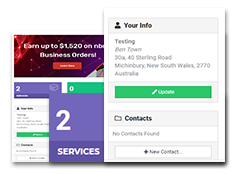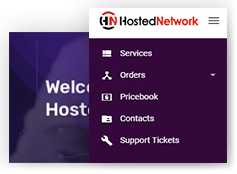Being a leader is tougher than it seems- sometimes you need to put yourself last, stay calm when you’re surrounded by chaos and even hide your frustrations when everything’s not working the way you want it.
No wonder why most MSP owners put up with the stress and burnout just to survive the day-to-day grind.
While there’s no step by step manual that MSP leaders can follow to achieve that perfect approach to leadership, you might be able to get a useful tip or two from the list below:
1. Refresh your perspective and mindset on leadership
If you’re sticking to old school leadership tactics like tying your team’s productivity to being in the office or equating great culture with having a ping pong table, then you’re already falling behind.
Great leaders are dynamic. For leaders to thrive, you need to be agile enough to adapt to changes and develop your leadership style – whether that change can be as drastic as a pandemic or working with different personalities on your team.
Staying stagnant can leave you behind, personally, and professionally as a leader and in business.
If you’d like to maintain a sustainable workplace, you have to understand how all these changes can affect your business and be flexible enough to change your mindset that will serve your MSP and your people better.
2. Run off a business framework
Business frameworks allow your MSP to create repeatable processes and achieve scalable results. It takes away the hard work of creating and establishing workflows within your MSP – from standardising reporting, tracking, workforce management and even how you run your meetings.
Think of it as setting a strong foundation for your MSP. It allows you to plan out why you exist, what your short-term and long-term goals are and ensure that your team understands the strategies on how to get there.
Getting your team involved in the decision-making process and letting them feel that they are essential in achieving your business’ vision will make them feel valued and motivate them in being consistently efficient in their roles.
Implementing business frameworks can also help you in delegating tasks effectively. Mapping out the functions your team will provide a clearer picture on the responsibilities, objectives and priorities for each role. Doing this will also enable you to determine how teams can collaborate better and address all the weak areas that impede productivity.
When you run off a business framework such as EoS, you save yourself the time and frustrations of reinventing the wheel and focus on what’s important – growing your business.
Recommended Content: 6 Reasons why your MSP needs a business framework
3. Communicate with your people
Your people are your greatest asset.
Boosting your employees’ morale to prevent turnover is more important than ever. People look for more than just paychecks but things that match their beliefs, purpose and value.
Great talent would most likely work in an environment that’s healthy and stick to a role that gives them a sense of purpose and nurtures their career as well.
Engaging with open and honest communication creates trust among your team. We recommend organising regular 1:1s or individual check-ins so you can develop a rapport with each of your employees and engage in a comfortable conversation where they can give their feedback freely. You can use these sessions too in asking about their personal and professional development plans and goals and how you can help in achieving them. This can be hard skills that can enhance their technical capabilities or even soft skills such as interpersonal communication, which is an important element in providing good customer service.
As our leader always says, “Expectations fail without communication”. How would you improve if you don’t even know what needs to be improved?
4. Invest in leadership training and join peer communities
The good thing about being a leader is that you are not alone. There are hundreds of MSP owners who you can seek advice from when you feel like you’re stuck in the weeds.
You don’t need to pressure yourself to be good at everything. MSP owners often park their own development with the mindset that their people should always come first. You are also an important part of your business and there’s no shame in prioritising your own development.
Enroll in leadership training programs and join MSP communities. Here you can collaborate or get advice from seasoned MSP owners who might have experienced similar situations you’re in, gain new ideas to innovate your business, growth hacks, or even get emotional support.
5. Stop wearing many hats
When you find yourself unproductive because of managing everything at the same time, STOP.
Often, MSP leaders find it hard to relinquish control and end up being burnt out because of wearing so many hats.
Take time to review all your functions and identify the bottlenecks so you can create a solid strategy for delegating tasks among your team. This can be done more efficiently if you align your team’s skill sets and knowledge to your functional map. Doing this can also help you identify and tackle skill gaps and assign the right task to the right people.
If you’d like to learn practical advice on MSP leadership and talent management from your peers, watch the series of on demand MSPs in Conversation webinars below:
 Contact us
Contact us  Partner Login
Partner Login  Service Status
Service Status 


 June 15, 2022
June 15, 2022
 Madeleane Abejero
Madeleane Abejero
 3mins
3mins